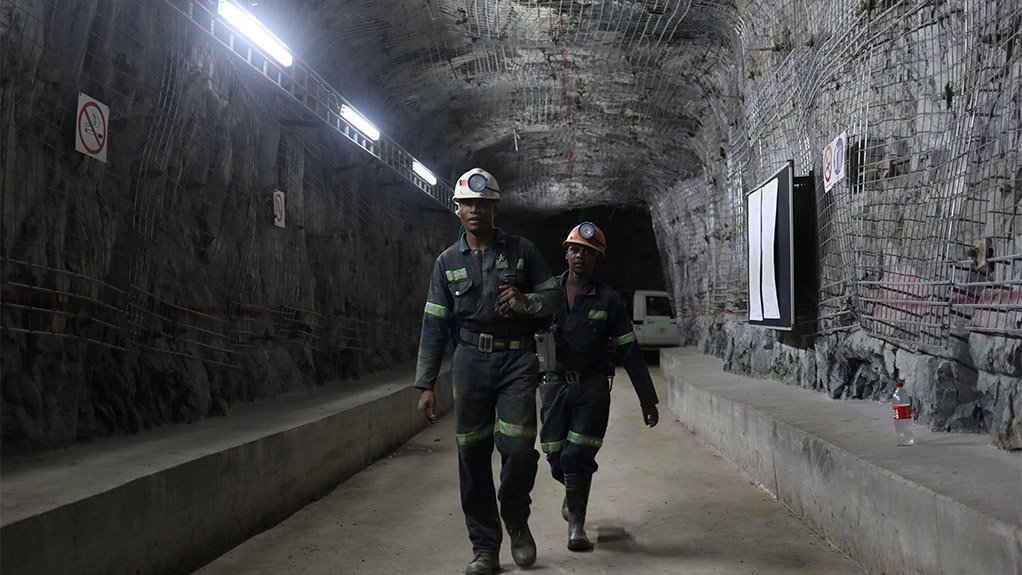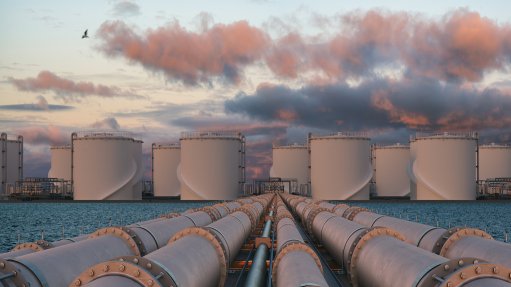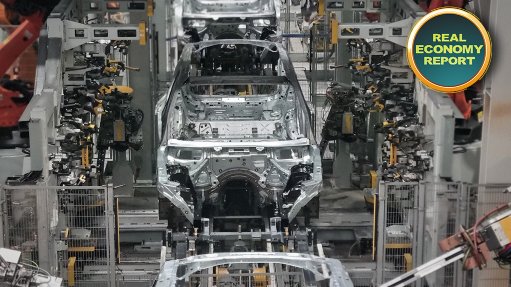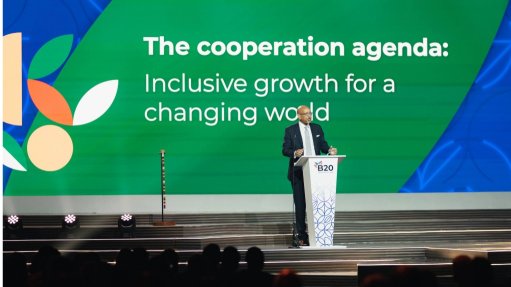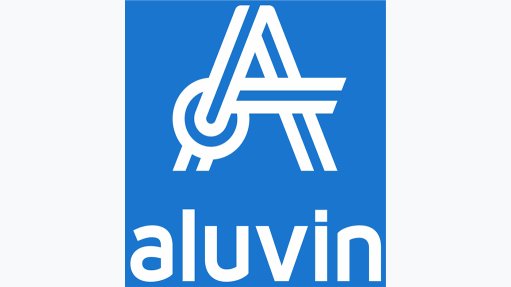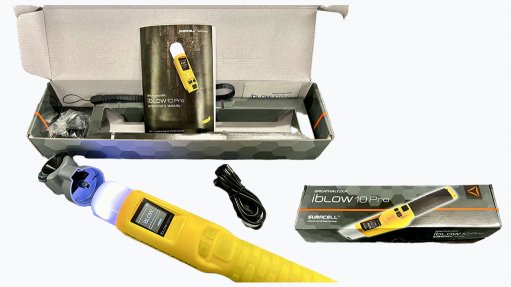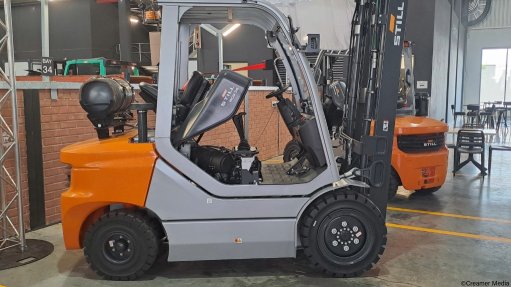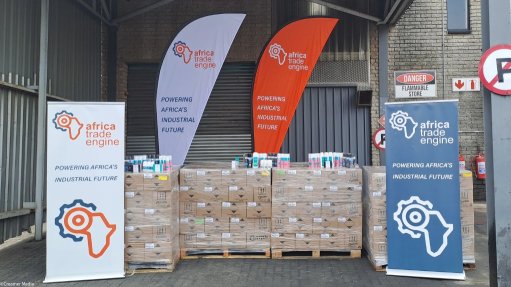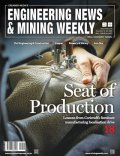Mining Cost Index shows cost pressure easing
In line with the general inflation trend in South Africa, mining input cost pressures remain well under control, with the latest data, including labour costs, showing a 1.1% year-on-year increase in the Mining Cost Index (MCI) for May.
Minerals Council South Africa economist André Lourens says that, by comparison, the Producer Price Index for final manufactured goods increased by just 0.1% in May, following a 0.5% increase in April.
Excluding labour costs, the MCI recorded a year-on-year decline of 0.7% in May, indicating deflationary conditions.
For Lourens, this is a positive development that reflects a broader easing of global cost pressures.
Key contributing factors include a decline in crude oil prices, which reached its lowest price for the year of $64.10/bl in May, as well as lower interest rates and an improvement in the nominal effective exchange rate against key trading partners.
These factors facilitated cheaper intermediate imports.
Lourens says the overall decline in input costs during May was largely driven by a 3.4% month-on-month improvement in the nominal effective exchange rate, which eased the cost of imported intermediate goods.
This was accompanied by a 2.4% decrease in mining and quarrying input costs and a 2.3% reduction in financing costs, following the South African Reserve Bank’s (SARB’s) interest rate cut in May.
In contrast, the most significant upward pressures came from electricity, which grew by 1.5% month-on-month, and wood and wood products, which increased by 1.2%.
Electricity costs remain elevated, continuing to register double-digit growth following the National Energy Regulator of South Africa approving a tariff increase of 12.74% for Eskom’s 2025/26 financial year.
This adjustment, which applies to direct Eskom customers, came into effect on April 1.
Looking ahead, electricity costs are expected to rise further in next month’s data, as mid-June marks the start of the winter tariff period during which electricity rates are typically 25% to 30% higher.
To some extent, the impact of rising electricity costs has been offset by a 13.8% year-on-year decline in coke and refined petroleum product prices, which have eased steadily over the past year as the oil price moved lower and the rand gained against the dollar, Lourens explains.
Labour costs also continue to be a significant contributor to overall input costs, with the sector disbursing about R49-billion in employee compensation during the first quarter of this year alone.
Additionally, water costs increased by 4.6% year-on-year.
As a newly introduced component in the MCI, water is a critical input for mining operations, and its inclusion enhances the comprehensiveness of the index.
Financing costs, by contrast, have eased considerably. Since initiating its rate-cutting cycle in the second half of 2024, the SARB has reduced the prime lending rate by a cumulative 100 basis points.
A further 25 basis point cut is anticipated in August, which would provide additional relief to capital financing costs.
In May, the platinum group metals (PGM) sector recorded the highest rate of increase in input cost inflation – more than double the sector average.
Lourens says this marks a shift from previous months, where the gold sector consistently faced the greatest cost pressures.
The elevated inflation in PGMs is partly owing to the difficulty of mining deep-level orebodies and sustained upward pressure on labour costs.
“While the sector has undergone significant restructuring over the past year to improve profitability, input cost pressures remain comparatively high.
“The gold sector followed closely behind, with notable increases also observed in other metallic minerals, chrome, and other mining and quarrying,” Lourens states.
In contrast, he adds, the manganese and coal sectors experienced the lowest input cost inflation among the major commodities, reflecting more stable cost dynamics in those subsectors.
Overall, input cost inflation in the mining sector remained well contained in May, with the MCI having risen by just 1.1% year-on-year. By excluding labour costs, the index reflects deflationary conditions, which indicates a broader easing in global cost pressures.
Notably, this third update and overhaul of the MCI introduces a formal aggregate index for the first time, marking a key advancement in how mining input costs are measured.
The index has been reweighted using 2024 data and rebased to December 2023, aligning it with the current structure of the mining sector and enhancing its comparability over time.
These updates significantly improve the index’s soundness and relevance as a tool for monitoring cost dynamics across commodities.
Article Enquiry
Email Article
Save Article
Feedback
To advertise email advertising@creamermedia.co.za or click here
Comments
Press Office
Announcements
What's On
Subscribe to improve your user experience...
Option 1 (equivalent of R125 a month):
Receive a weekly copy of Creamer Media's Engineering News & Mining Weekly magazine
(print copy for those in South Africa and e-magazine for those outside of South Africa)
Receive daily email newsletters
Access to full search results
Access archive of magazine back copies
Access to Projects in Progress
Access to ONE Research Report of your choice in PDF format
Option 2 (equivalent of R375 a month):
All benefits from Option 1
PLUS
Access to Creamer Media's Research Channel Africa for ALL Research Reports, in PDF format, on various industrial and mining sectors
including Electricity; Water; Energy Transition; Hydrogen; Roads, Rail and Ports; Coal; Gold; Platinum; Battery Metals; etc.
Already a subscriber?
Forgotten your password?
Receive weekly copy of Creamer Media's Engineering News & Mining Weekly magazine (print copy for those in South Africa and e-magazine for those outside of South Africa)
➕
Recieve daily email newsletters
➕
Access to full search results
➕
Access archive of magazine back copies
➕
Access to Projects in Progress
➕
Access to ONE Research Report of your choice in PDF format
RESEARCH CHANNEL AFRICA
R4500 (equivalent of R375 a month)
SUBSCRIBEAll benefits from Option 1
➕
Access to Creamer Media's Research Channel Africa for ALL Research Reports on various industrial and mining sectors, in PDF format, including on:
Electricity
➕
Water
➕
Energy Transition
➕
Hydrogen
➕
Roads, Rail and Ports
➕
Coal
➕
Gold
➕
Platinum
➕
Battery Metals
➕
etc.
Receive all benefits from Option 1 or Option 2 delivered to numerous people at your company
➕
Multiple User names and Passwords for simultaneous log-ins
➕
Intranet integration access to all in your organisation



